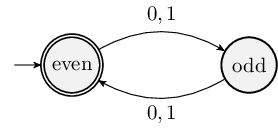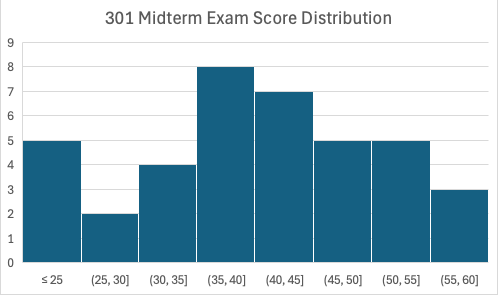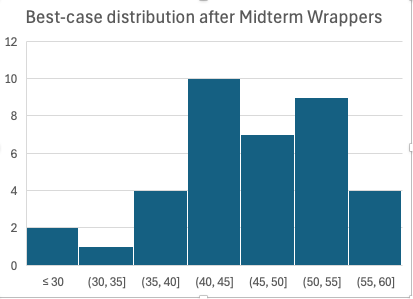
Recall we defined the following operations on languages:
Theorem: The set of regular languages is closed under the regular operations.
Proof: Not yet. We don’t have the tools to prove this in full yet, but we’ll work through an example of how this can be shown for the union operation:
Consider the following two languages \(L_A\) and \(L_B\) over \(\Sigma = \{0, 1\}\):
First, to prove that these languages are regular, we can show that there exist DFAs \(M_A\) and \(M_B\), where \(L(M_A) = A\) and \(L(M_B) = B\).
We did this in the Exercises:


Then, to show that \(L_A \cup L_B\) is regular, we must show that there exists a DFA \(M_{A \cup B}\) such that \(L(M_{A \cup B}) = L_A \cup L_B\).
Brainstorm: How could we do this?
(See the handwritten notes for a DFA accepting \(L_A \cup L_B\))
The general procedure is this:
The set of states is \(Q_A \times Q_b\)
The start state is the state \((q_A, q_B)\)
The accept states are \(\{(s_A, s_B) : s_A \in F_A \text{ or } s_B \in F_B\}\)
The transition function is defined by:
\(\delta_{A \cup B} ((s_A, s_B), x) = (\delta_A(s_A, x), \delta_B(s_B, x))\)
In other words, the transition function takes you from the pair of states you’re at to the pair of states the two individual machines would be in after they each saw the next symbol.
So we’ve seen that the union of two regular languages is a regular language.
Proving this property for concatenation and the closure (star) operations is a little trickier, so we’re going to take a detour that will make it much simpler: next we’re going to introduce nondeterministic finite automata, which are much easier to work with and combine. Then, the plot twist is that NFAs aren’t any more powerful than DFAs - meaning that anything an NFA can do, a DFA can also do.
Let’s break some rules. Suppose we want to find a FA that accepts all strings containing either 1011 or 000 as a substring. I’m going to make a FA for this, but it’s not going to follow the rules for a DFA.
(see the handwriten notes for the NFA)
What rules did we break?
How do we define this new machine mathematically? An NFA is almost the same as a DFA, with two differences:
For strings over an alphabet \(\Sigma\), an NFA’s alphabet is defined as \(\Sigma \cup \{\epsilon\}\).
The transition function was previously:
That is, a (state, symbol) pair can now map to zero or more states.
This introduces ambiguity, so which strings do we say are accepted? We say that an NFA accepts a string if there is any sequence of state transitions possible that result in an accept state.
Do Exercises Part A-B
We’ve seen that the regular languages are those that have an accepting DFA. Are NFAs more powerful? In other words, are there languages that NFAs can accept that DFAs can’t?
If NFAs are no more powerful than DFAs, then things get a lot easier: for example, the following language from the Exercises is simply the union of two languages:
\[ L = \{w : w \text{ contains an odd number of $a$'s or exactly two $b$'s}\} \]
and the approach that works to build an NFA from this (that is, joining each language’s DFA with an \(\epsilon\) transition from a shared start state) could work on any pair of languages.
It turns out that no, NFAs are not more powerful.
Theorem: For any NFA \(N\), there exists an equivalent DFA \(M\) such that \(L(M) = L(N)\).
We can prove this by taking an NFA and constructing a DFA that accepts the same language. We won’t do this in full formality or generality, but we will work through an example conversion and show that it generalizes. The process is somewhat similar to how we proved the union case for DFAs, except instead of constructed DFA state corresponging to pairs of original machine states, we’ll need to represent sets of states that the input machine might have been in.
Midterms are graded. Here’s the distribution of scores out of 60:

You have an opportunity to earn some points back by completing a midterm exam wrapper, in which you’ll analyze your mistakes and reflect on your study strategies. The number of points you can earn back depends on your original score. If everyone gets the maximum possible points back from the wrapper, here’s what the distribution would look like:

You’ll submit on Canvas; the assignment is up, and submissions are due a week from tonight. The writeup with details is here, and also linked from the Midterm day on the Schedule table.